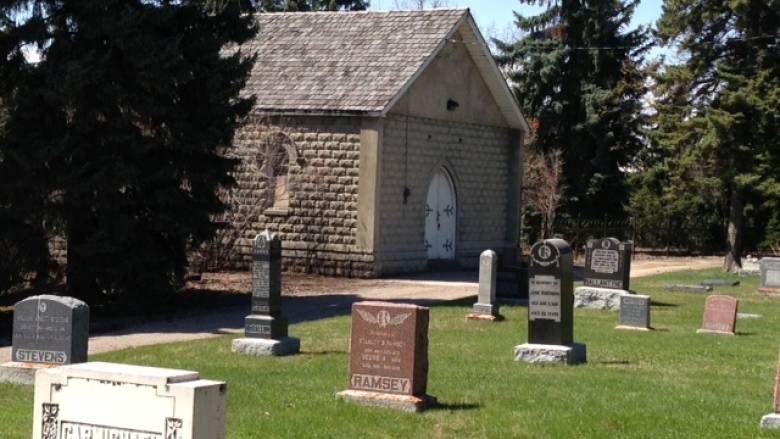Union is not the first, but the oldest surviving cemeteries in Calgary. This is a typical Victorian cemetery. Many founders and pioneers of Calgary are buried here, and there is also a Military Field of Honor, writes calgary-future.
First location at “Shaganappi Point”
In 1884, Calgary was registered as a city. At that time, its population was more than 1,000 people. By the end of the year, Calgary boasted its first newspaper, about 30 large buildings, and a strong economy based on agriculture and ranching.
At the same time, the newly formed city council began to search for land for a Protestant cemetery, since there was only one in Calgary – on the territory of the Roman Catholic mission, it turned out to be insufficient to meet the needs of the rapidly developing city.
In 1885, city councilors selected a block of land on “Shaganappi Point” for the future cemetery. The first burial took place here in September of the same year. In the 1800s, graves were dug by hand and the soil at the site was stony, so to make the work easier, the council began looking for another site for the cemetery.
Transfer to Road S.E.
The city purchased the land on Road S.E. to local farmer August Carney. The new Union Cemetery was opened here in 1890. From 1892 to 1912, burials were moved from Shaganappi Point. A golf course was later located there.
At the time of the establishment of the cemetery at the new location, the cost of a single plot was $5, a double plot was $10, and the fee for digging and burying a grave was $2. At that time, it was quite a high price. In addition, it was difficult to get to the burial grounds, since the Elbow River had not yet been bridged. The funeral crew had to climb and descend steep banks and wade through deep and dangerous water. Mourners waited for a ferry to take them. And all this in the conditions of unpredictable Calgary weather.

Boer War veterans are buried in the Field of Honor, and the Cross of Sacrifice is also located here, which honors soldiers who died during the First World War. In addition, the cemetery has two areas where the first 300 members of the North West Mounted Police are buried.
Another Union section contains no markings. This area, the size of 4 living spaces, hides the remains of almost a thousand homeless, destitute and executed Calgarians. In Calgary’s early days, the city carried out executions at the mounted police barracks, with their bodies buried in unmarked graves near the scaffold (execution structures), but some executed criminals were buried in unmarked graves in Union Cemetery.
At first, all graves were aligned in the traditional east-west orientation with the heads of the dead to the west, but this tradition went out of fashion, so the geographical orientation was no longer followed here.
Landscaping, columbarium and funeral chapel
Many markers and graves show late 19th-century symbolism, and the landscaping between the ironwork deliberately resembles a park. The cemetery grounds are the work of Calgary’s first superintendent of parks, William Reeder, whose residence was located in the northern part of the cemetery. The garden surrounding the residence became an exhibit for the city. Here Reeder conducted experiments with different types of plants, researching which of them are adapted to the harsh winters in the prairies.
Reader’s gardens later fell into disrepair, although they were partially restored. The northern edge of the cemetery is a favorite spot for wedding photographers. On summer weekends, more wedding cars than hearses can be seen at the cemetery.
The cemetery has a columbarium for the burial of cremated remains. Adjacent to Reader’s gardens is an old funeral chapel with a mortuary. It was built in 1909. The chapel is architecturally unique, as buildings of that period were usually built from readily available sandstone. However, this chapel was built from concrete blocks.

In winter, the frozen ground made digging graves a difficult task. That is why, at that time, after the services, the coffins were lowered by elevator into the morgue in the basement of the chapel. When the ground became suitable for digging in the spring, the coffins were moved from the morgue to the cemetery.


